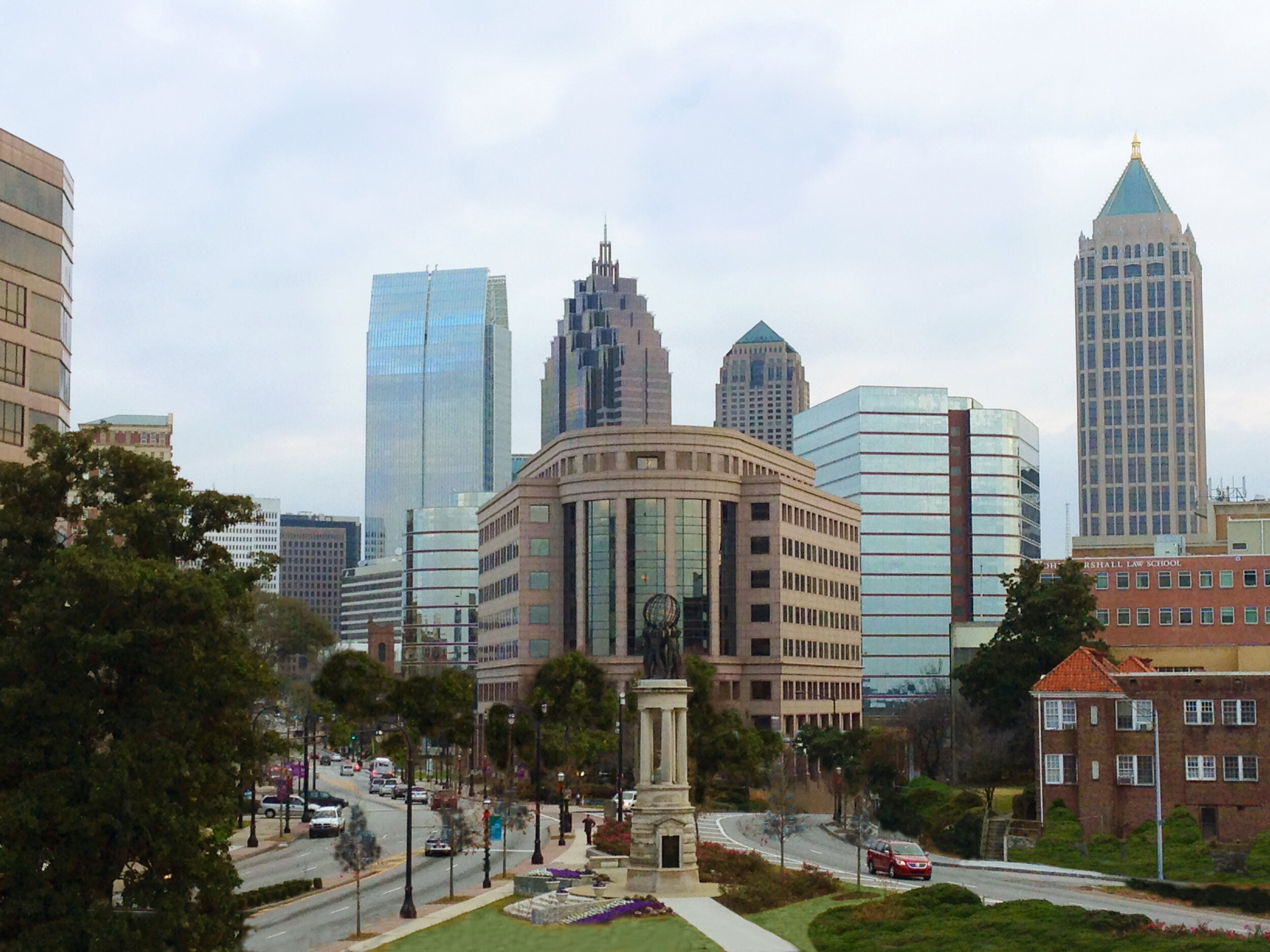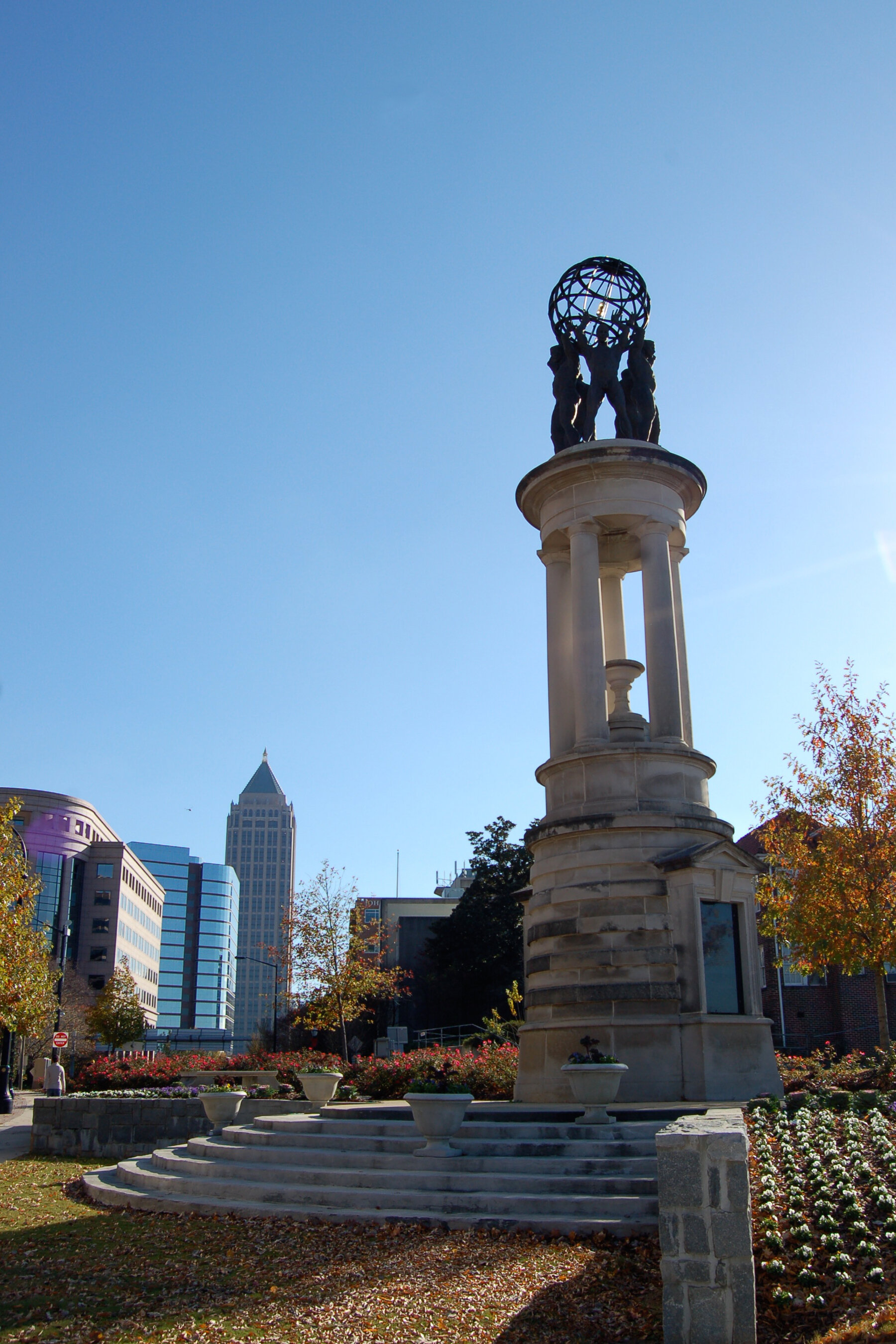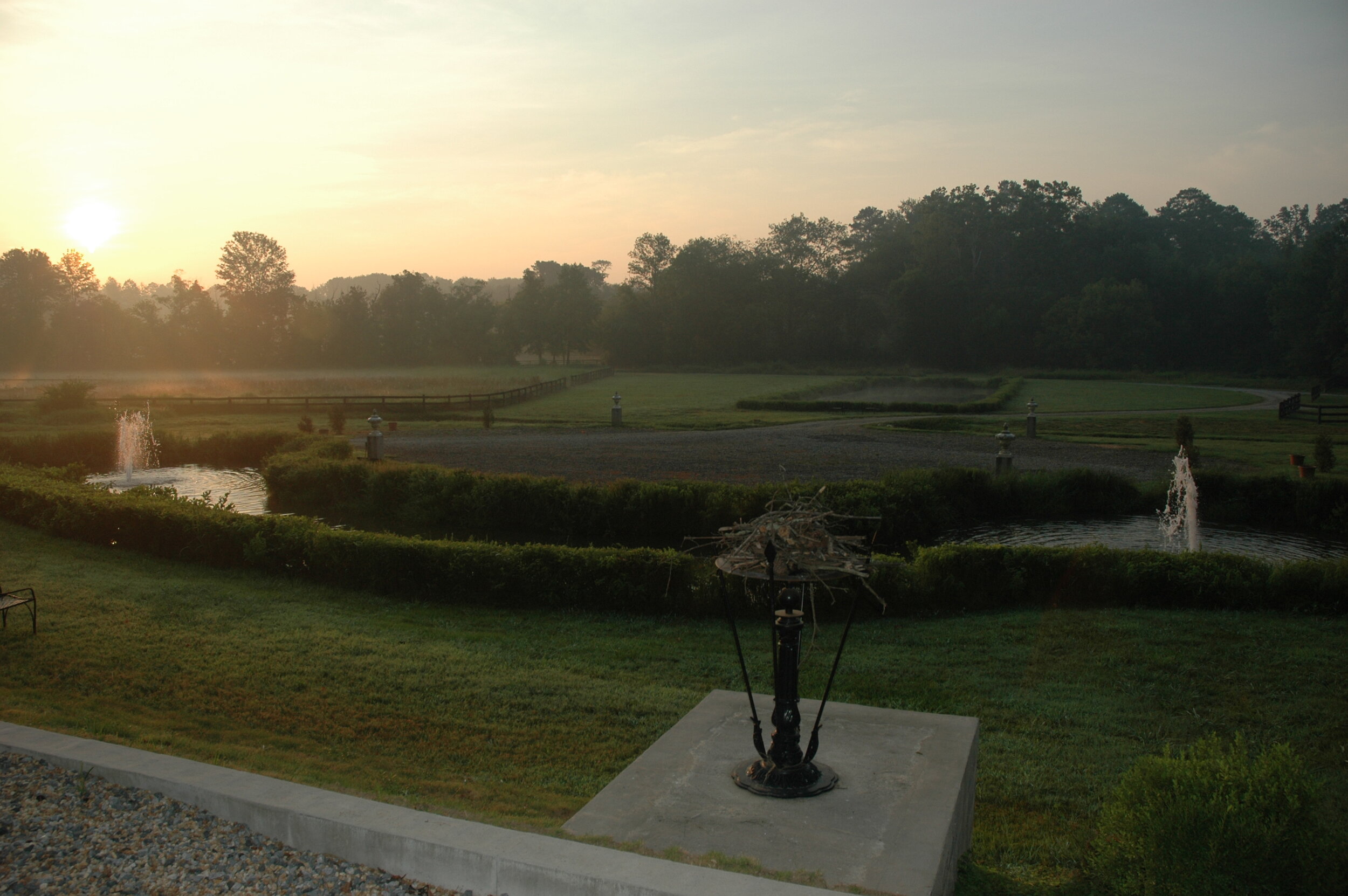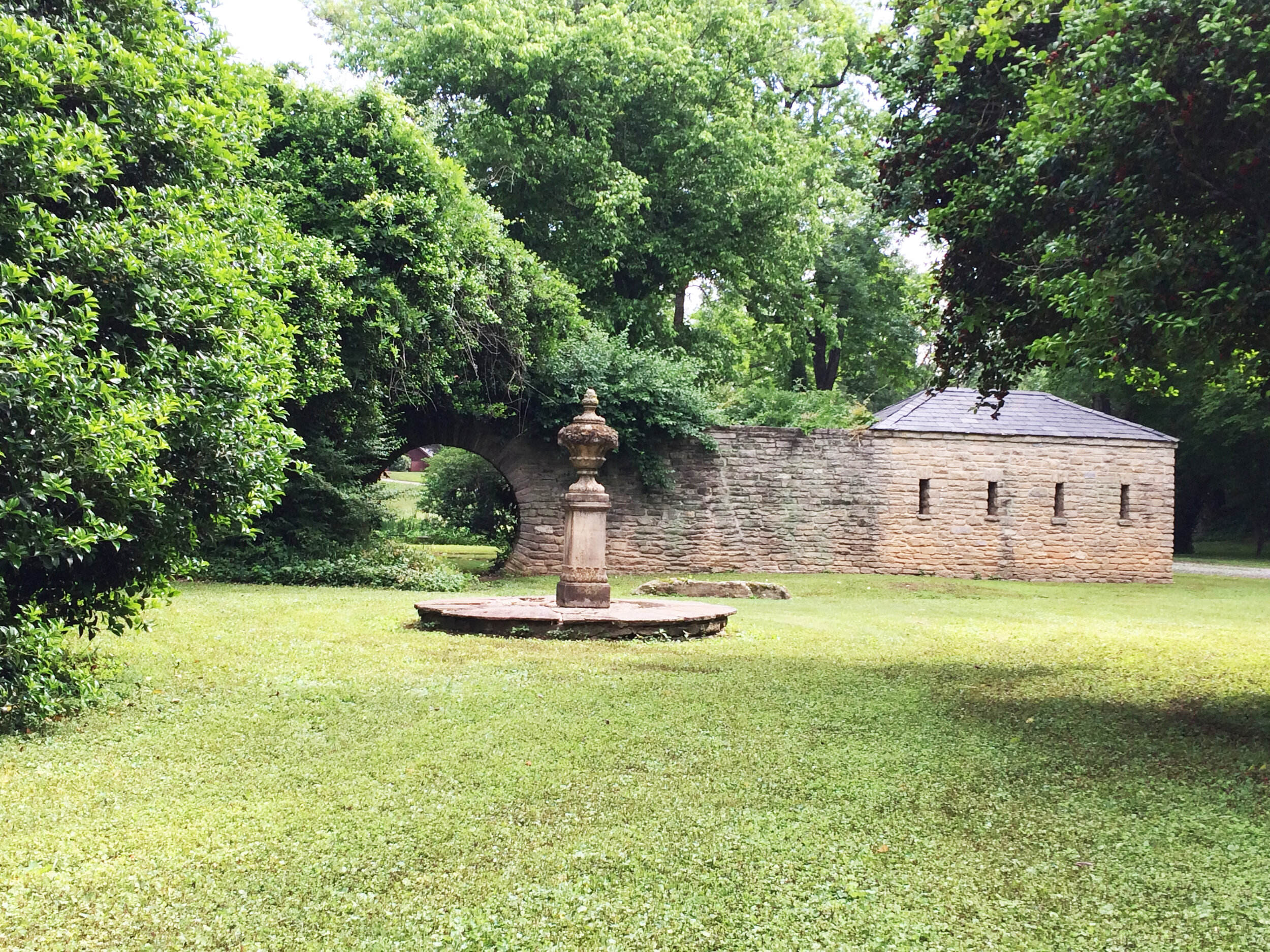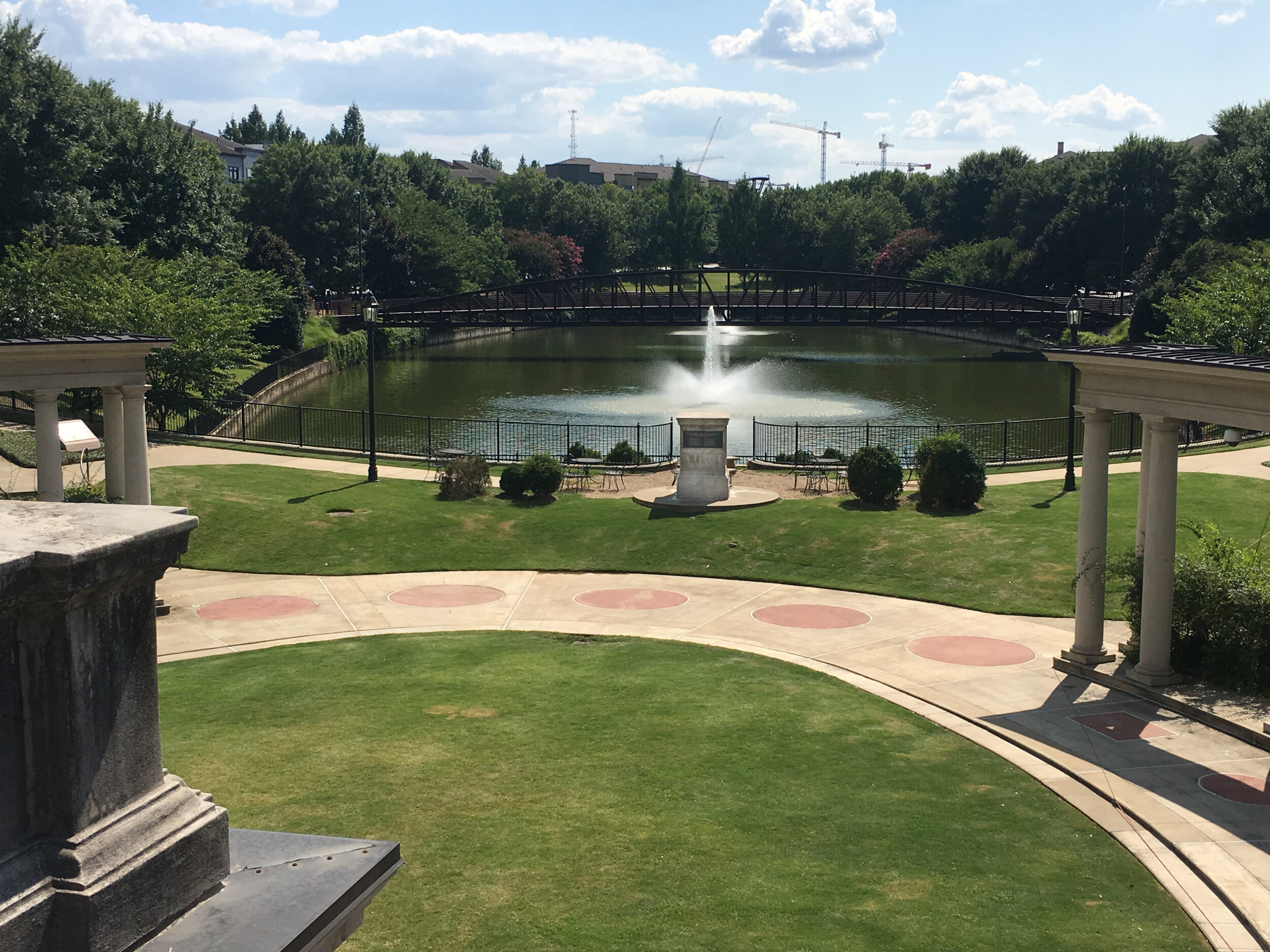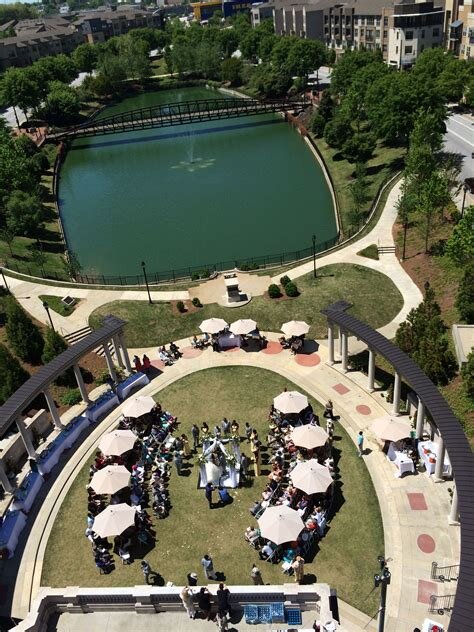
Rodney Cook Sr. Park
in Historic Vine City
The Honorable Rodney Cook Sr. Peace Park first phase has been completed in Atlanta, Georgia, where 18 acres of land have become home to a $128 million park. Upon completion of the National Monuments Foundation’s Phase II approved monuments, the Peace Park will serve as a symbol of Georgia’s unique 300-year tradition of peace, providing a place for people from around the world to reflect on the work it takes to achieve true peace and how to preserve it for future generations. Our Georgia Nobel Peace Pantheon has already drawn six international peace institutes to its peace think tank incubator space for the desired rebranding of the city of Atlanta as the Global Center of Peace.
The project represents collaboration between the City of Atlanta Department of Parks and Recreation, the City of Atlanta Department of Watershed Management, The National Monuments Foundation, The Trust for Public Land, City of Atlanta Mayor’s Office, and the community. The National Monuments Foundation’s component includes the Peace Column, which will contain the 8,000 volume CT Vivian and 3,000 King family libraries, the Georgia Nobel Peace Pantheon on the park’s highest hill (if Georgia were a nation, she would be #5 in Nobel Peace Laureates), the Ambassador Andrew Young Peace Institute, and 18 statues to Georgia peacemakers that were chosen by the community. Cook Park's purpose is to showcase Georgia’s legacy of peace since our founding in 1733.
Originally constructed in the late 19th century and called Mims Park, the park was designed by Olmsted Brothers whose plan is the basis for the new and much larger acreage. The site for the park is located one block from Historic Sunset Avenue, on which are the homes of Dr. Martin Luther King, Jr., Senator Julian Bond, and Mayor Maynard Jackson. The National Monuments Foundation has choreographed the purchase of the adjacent Martin Luther King, Jr. Life Home by the National Park Service to be restored as a house museum. Over 1 million visitors per year are expected. Dr. King’s statue is among the 18 previously mentioned, and is being created by our team’s Kathy Fincher. The statue of Congressman Lewis was created by our team’s Gregory Johnson. The statue of Chief Tomochichi was created by our team’s Stan Mullins. The statue of The Honorable Rodney Cook, Sr. is being created by our team’s George Kelly. These assets will educate, inspire, and bring together the global community in Atlanta and visitors from around the world.
Princess Diana Park at Pershing Point
On August 31, 1997 Diana, Princess of Wales, was killed in an automobile accident in Paris. During this time, CNN estimated over 20,000 people were drawn to the World Athletes Monument to grieve and pay their respects. Flowers, candles, and mementos were left at the base of the building rising to 6 feet in height. The mourners remained on the site sleeping in the street and on the plaza for the week leading to the live broadcasted funeral of the Princess of Wales. The Atlanta City Council shortly thereafter dedicated the space as the Prince of Wales’s Monument at Princess Diana Square. The New Yorker Magazine has stated that this monument has had more impact on the soul of the people of Atlanta than any other artwork in the city’s history.
Alexandra Park
Alexandra Park is the largest nature preserve in the city limits of Atlanta, GA. It contains a number of notable monuments and follies, two in particular to the Princess Royal and John F. Kennedy, Jr. The park is laid out on a geometric plan which allows for solar axes on dates that are particular to certain monuments.
Atlantic Station Linear Park
The north linear park in Atlantic Station was designed to focus on a remnant of the Atlantic Steel Company, which inhabited this large Midtown property for over 100 years. The promenade walkway continues beyond the columnar smokestack and engages the Peace and Justice Gate, winner of the 2006 Palladio Award for best new public space in the United States.
English Park
English Park is a five-acre garden oasis in the middle of Atlantic Station in Midtown Atlanta. A steel truss bridge crosses the lake at Mecaslin Street allowing vistas of Midtown Atlanta, the Millennium Gate Museum, and the Millennium Cenotaph.
Newington Park
The Newington Cropsey Foundation campus consists of the carpenter-Gothic villa, Everest, and sunken gardens of Hudson River School painter, Jasper Cropsey, a sculpture atelier building, two guest houses, a guard house, an amphitheater, a small lake, the Gothic-styled American Arts Magazine building, and the main painting gallery building with its domed library and administrative offices. The park was begun by Peter Gisolfi Architects in New York.
The view-shed from the Cropsey campus to the Hudson River and the monumental Palisades beyond were partially blocked by two mid-20th century metal warehouses, and the scene was a conglomeration of parking lots and the adjacent Metro North rail station, which takes riders directly into Grand Central Station. The warehouses were removed, opening the view, and a park was designed in their place with fountains on the east and west sides of the Metro North rail line. The Hastings-On-Hudson parking lot was redesigned to curve around the east fountains and create an attractive pattern from the monumental industrial Warburton Avenue Bridge sidewalk, which serves as the main street of the town. The Newington Cropsey grounds having been the town dump, was an unattractive place for anyone to go for over a century, yet the Newington Cropsey Foundation, in its vision, remediated the industrial soil and created an axial monumental gateway out of the industrial-styled Warburton Avenue Bridge. Gothic struts and two Gothic towers, one for an elevator and one for a staircase, were designed for the bridge to allow Hastings citizens to more quickly move from the train station to the town center. The Newington Cropsey main gate was positioned directly under the central arch. The ensemble appears to be a continuous whole and the town now enjoys beautiful views from the bridge on either side of their main street. The Metro North rail line is camouflaged into the design.













